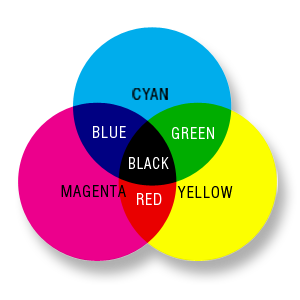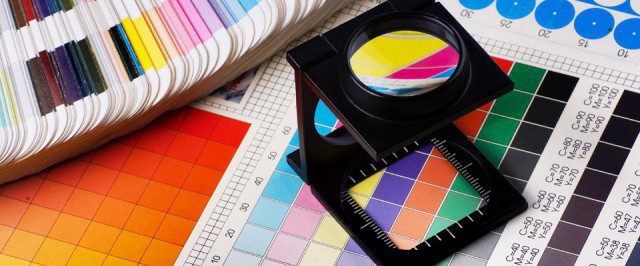Offset Printing Technology – Basic
Offset printing is one of the most widely used printing methods today, known for its high-quality, consistent, and professional results.
Compared to other forms of printing, offset stands out when sharp detail and accurate color reproduction are required.
How Offset Printing Works
At its core, offset printing is a process designed for printing on flat surfaces using aluminum plates.
Each plate carries an image that has been chemically treated so only the image areas (such as text, shapes, or colors) attract ink, while the non-image areas repel it.
Here’s how it works step by step:
Ink and water application – Both ink and water are applied to the plate.
Due to the chemical treatment, ink adheres only to the image areas, while water protects the non-image areas from receiving ink.
Transfer to the blanket – The inked image is first transferred from the plate to a special multi-layered rubber printing blanket.
Printing on paper or cardboard – The blanket then presses the image onto paper, cardboard, or other materials, ensuring smooth and precise reproduction.
This process repeats for every sheet that passes through the press.
For full-color printing, the material typically passes through four separate printing units, each applying one of the process colors.
This method is known as the CMYK color model, which stands for:
- C – Cyan (blue/green spectrum)
- M – Magenta (red/blue spectrum)
- Y – Yellow
- K – Key (black plate that defines detail and depth)
By layering these four colors with precision, offset printing can reproduce virtually any image with remarkable clarity, making it the standard for magazines, packaging, marketing materials, and high-end publications.
Key Terms in Offset Printing
Understanding offset printing involves some essential terms and concepts:
Aqueous Coating
A water-based coating applied to protect the print and enhance its visual appearance.
Impression (Printing) Cylinder
The cylinder that presses the paper or cardboard against the blanket cylinder, ensuring proper transfer of ink.
It rotates in the opposite direction of the blanket cylinder, working together to transport the substrate and complete the printing.
Color Management System (CMS)
Specialized software that coordinates scanners, monitors, printers, and presses to maintain consistent color throughout the entire production process.
Chromo Paper
A type of paper made from wood pulp or rag paper, coated on one side with a water-resistant finish.
Fountain Solution
A mixture of water and chemicals used to keep non-image areas of offset plates ink-free.
Ink Volume
The amount of ink applied to the substrate. Ink volume is crucial for achieving the desired print quality and depends on raster settings.
Raster
A grid of parallel lines that defines resolution.
In printing, raster refers to the number of lines per centimeter and the angle of those lines.
In digital graphics, raster images are pixel-based, defined by X and Y coordinates.
Duplex Board
Duplex board, often referred to as white lined chipboard, is a multilayer paperboard material.
It generally features two main layers: the upper layer made of bleached chemical pulp and the lower layer composed of recycled fibers or waste paper.
These layers are bonded together using lamination or adhesive techniques, creating a firm and durable sheet.
This material is valued for its smooth surface, high strength, and outstanding suitability for printing applications.
UV Inks
Special inks that harden instantly when exposed to UV light.
They contain photo-initiators that trigger polymerization, resulting in a fast-drying and durable print.
Advantages of Offset Printing
Offset printing remains one of the most reliable and cost-effective printing methods. Some of its key strengths include:
Consistently High Quality – Produces sharp, detailed images and illustrations with precision and clarity.
Durable Printing Plates – Plates last longer because the printing surface doesn’t come into direct contact with the plate.
Cost-Effective for Large Runs – Ideal for producing industrial quantities at a relatively low cost per unit.
Efficient Plate Production – Printing plates are relatively fast and simple to create.
Professional Results – Smooth, clean color application thanks to the rubber blanket’s ability to adapt to different surfaces.
Limitations of Offset Printing
Despite its many advantages, offset printing also has some weaknesses compared to other technologies:
Longer Setup Time – Setting up the press and developing plates takes time, making offset less suitable for urgent, short-run jobs. In such cases, digital printing is often a better option.
Plate Sensitivity – Aluminum plates can be affected by chemical reactions, sometimes leading to unwanted ink marks on non-image areas.
Lower Quality Compared to Rotogravure – While offset produces excellent quality, rotogravure printing can achieve even finer detail and consistency in certain high-end applications.
Conclusion
Offset printing technology remains a cornerstone of the printing industry.
Its combination of precision, durability, and cost efficiency makes it the preferred choice for large-scale, professional printing projects.
Although digital printing is becoming more popular for short runs, offset printing continues to dominate when it comes to high-volume production and uncompromised print quality.


